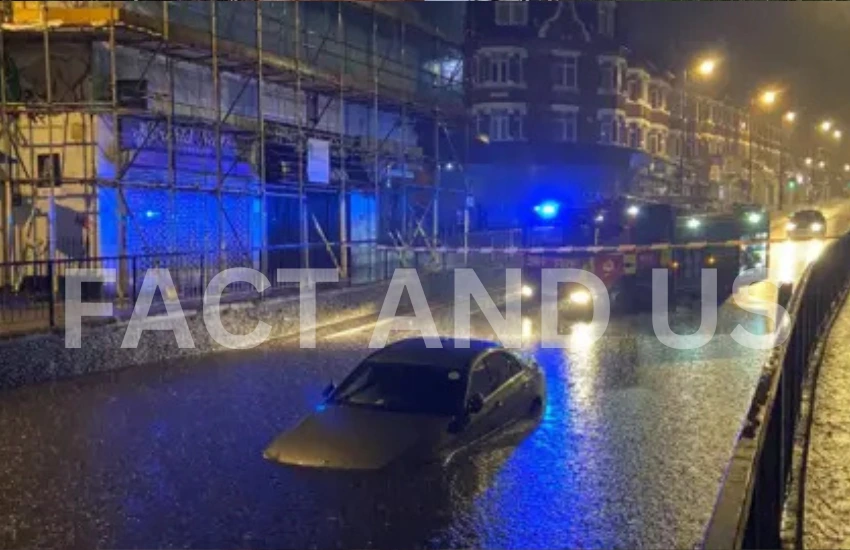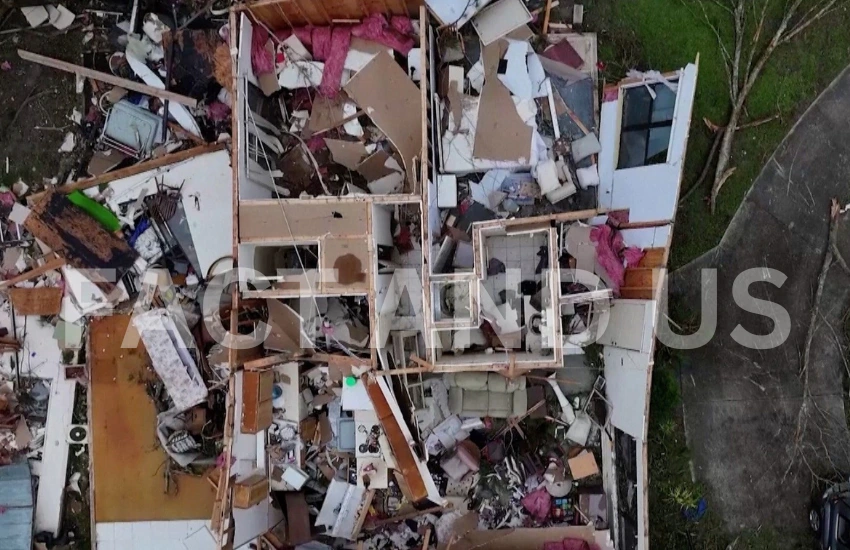Chaves County Sheriff Mike Herrington said he climbed onto the roof of his car when rising water stranded the vehicle and several others, leaving them submerged up to the windows.
At least two people have been reported dead and 309 were rescued in the flash floods, reports say. The Chaves County Sheriff’s Office confirmed Herrington was rescued unhurt. A local sheriff found himself stranded on top of his patrol car as flash floods quickly submerged the roads in a dramatic scene straight out of an action movie.
What happened was a routine drive through the county turned into a life-or-death situation when a sudden storm unleashed torrents of water, turning streets into rivers and catching the sheriff by surprise.

Contents
A Routine Day Gone Wrong
The sheriff, whose name remains unknown at this time, was on his routine patrol in a rural area when the weather turned nasty. Given the heavy rain prediction, no one could have forecast how quickly the condition would turn critical. The minuscule creeks alongside the highway swelled within minutes of rising above capacity, overflowing on the highway. The Sheriff knew that area and thought he could drive through the rains that were rising on the highway. The speed and rise of the floodwaters were even beyond the knowledge of an experienced driver like him.
Within minutes the water had risen to the tires of his vehicle, and the engine stalled. Alerted to his peril, the sheriff quickly stepped out of his car and onto the roof as the water continued rising.
Dangerous Trend of Flash Flooding


Such flash floods now occur more frequently in many parts of the country due to unpredictable weather, much heavier rainfalls, and less time for people to escape before the water develops. It makes the risk even greater in rural areas where drainage is limited because creeks and rivers can spill over unexpectedly.
For the sheriff, what had started out to be an ordinary patrol turned into a too-familiar example of how sudden and deadly flash floods can be. This incident is part of a growing trend with increasingly catastrophic weather systems putting both citizens and first responders at risk.
A Rescue Operation in the Nick of Time
Fortunately, the sheriff had his radio with him, and he was able to call for backup. Emergency responders arrived on the scene but found a challenging situation. The roads surrounding the sheriff’s car were completely underwater, and because of the strong currents, rescuers could not reach him by vehicle. Instead, a team of first responders used a rescue boat in order to navigate the floodwaters and pull the sheriff to safety.
“It was close, really close,” said one of the rescuers. “The water was rising so fast that, within minutes, it could’ve been much worse. \”Local authorities have since issued warnings to residents to avoid driving in flood-prone areas, reminding the public of the dangers of underestimating flash floods.

The Sheriff Speaks Out
Immediately after the rescue was done, he appears for a few words in front of the media. He said how grateful he is that the rescue teams had reached as soon as possible and told that during such extreme conditions, one should never ignore the warnings. “I have seen my share of storms and floods, but nothing like this. It happened so fast,” the sheriff said. “If you ever find yourself in a scenario where the water is rising, don’t wait it out-get to safety.
The story of the sheriff reminds many of not being lax because even those trained individuals, who are to respond in emergency operations, are not exempted in flash floods with their sudden dangers.
The Lesson: Turn Around, Don’t Drown
This incident teaches one an essential lesson: there is nobody who can be proved invincible to the power of nature, and flash flood shows only how unpredictable nature can be. National Weather Service has always come out with their famous slogan- “Turn Around, Don’t Drown” to remind people that the danger of driving through floodwaters is very great, no matter how shallow the water appears.

For the sheriff, his quick thinking and ability to call for help might have saved his life. However, for others, driving into flooded areas has resulted in tragic outcomes.
Conclusion: A Call for Caution
And with changing patterns and frequent extreme weather events, people, be it the civilians or the law enforcement, should be ever watchful. Floods can rise in a fraction of seconds. Even familiar passengers are left surprised.
The sheriff’s story is a testament to the power of nature and a reminder to always take flood warnings seriously. His fortunate rescue serves as a powerful lesson to the community: when faced with rising
stay connected with fact and us for more such news
